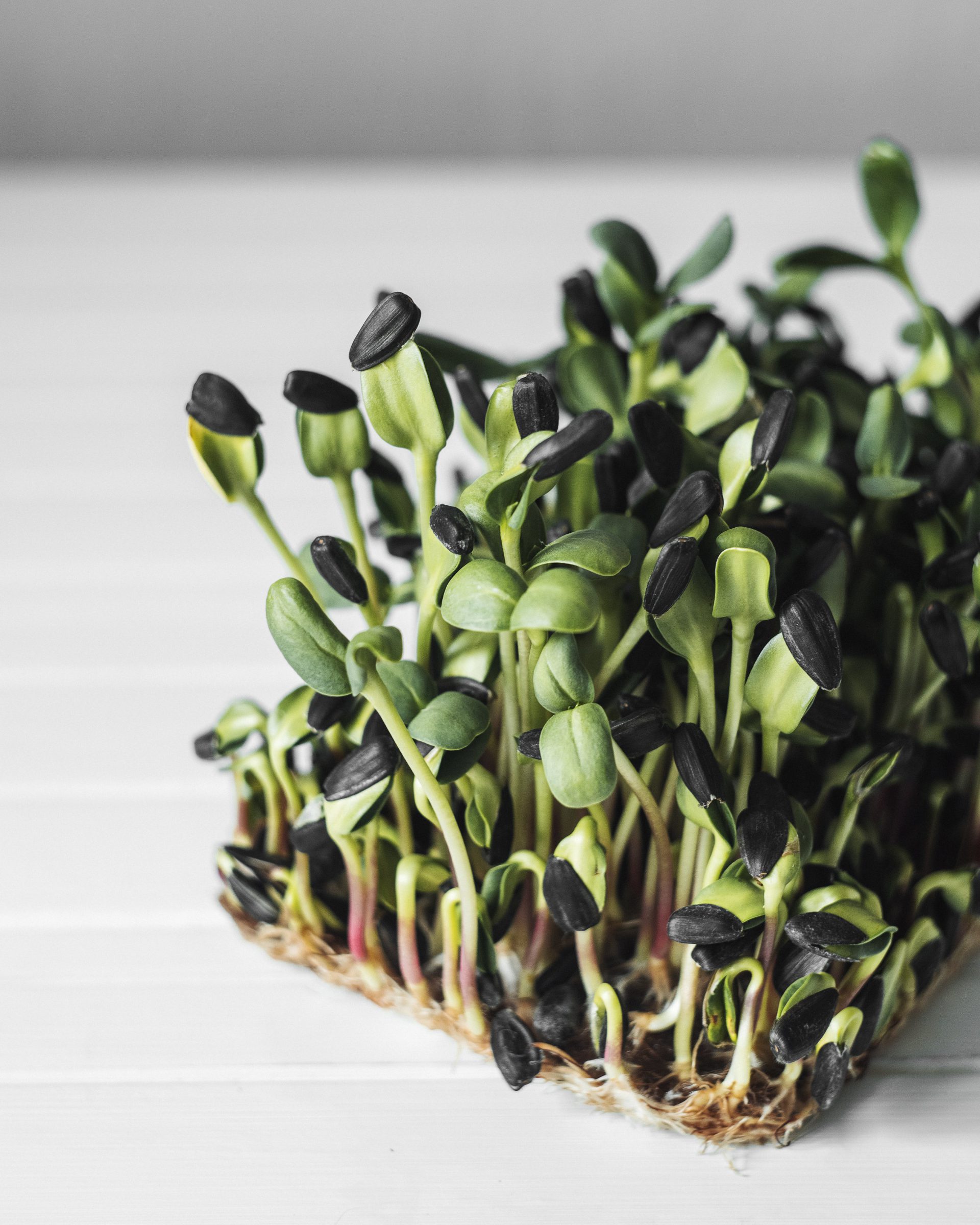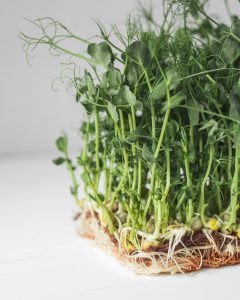
- Readers Rating
- No Rating Yet!
- Your Rating
In the vast canvas of gastronomy, microgreens emerge as little masterpieces that not only delight the palate but also provide an exceptional nutritional boost. These miniature sprouts, harvested in the early stages of plant development, have transformed the way we understand and enjoy fresh ingredients in modern cuisine.
Microgreens: What are they and how are they grown?
Microgreens are edible vegetable and herb seedlings, harvested when they are still young and between 7 and 21 days old. Although small in size, these tiny plants are loaded with concentrated nutrients, often surpassing their mature counterparts in terms of vitamins, minerals and antioxidants. They are grown from the seeds of various plants, such as broccoli, alfalfa, radish, coriander and many more.
Their popularity has grown due to their intense flavour and increasing awareness of their nutritional profile. In addition, microgreens add texture and vibrant colour to dishes, making them an attractive element in gastronomy.
They are easy to grow and can be grown indoors all year round, making them an accessible option for urban gardening enthusiasts and health food lovers. They can be used as ingredients in salads, sandwiches, smoothies and other dishes, adding a fresh and nutritious touch. Microgreens represent an innovative and delicious way to incorporate essential nutrients into the daily diet, offering a unique and healthy culinary experience.
Nutrient abundance in miniature
Microgreens, despite their diminutive size, stand as true nutritional giants. Extensive research has revealed that these tiny seedlings harbour significantly higher concentrations of vitamins and minerals compared to their more mature counterparts. This phenomenon makes microgreens an outstanding choice for those seeking to maximise nutritional density in their daily diet.
The exceptional nutritional profile of microgreens is evidenced by the presence of a number of antioxidants that play a crucial role in promoting health. Chief among these are vitamins C and E, which are found in remarkable concentrations in these tiny seedlings. Vitamin C, known for its ability to strengthen the immune system and act as an antioxidant, is particularly abundant in microgreens. Similarly, vitamin E, recognised for its antioxidant properties that combat oxidative stress, is also found in significant levels in these miniature sprouts.
In addition to vitamins, microgreens are a valuable source of essential minerals for the human body. Iron and zinc, two minerals crucial for various bodily functions, are present in appreciable quantities in these small growing vegetables. Iron plays a key role in the transport of oxygen in the blood, while zinc is essential for the proper functioning of the immune system and for healthy skin.
In short, microgreens are much more than culinary garnishes; they represent a concentrated and powerful source of essential nutrients, offering a delicious and practical way to improve the nutritional quality of the daily diet. Incorporating these little giants into the diet can be a valuable strategy for promoting health and wellness through nutrition.
An array of flavours in every leaf
Microgreens display a feast of flavours in every tiny leaf. From the bold, peppery intensity of rocket to the refreshing herbaceousness of basil, each variety brings a unique twist to the taste buds. The diversity of flavour profiles present in these tiny sprouts allows chefs and culinary enthusiasts to embark on a constant exploration of gastronomic possibilities.
These microgreens not only add colour and texture to dishes, but also act as a living palette of flavours, elevating the complexity and depth of culinary creations. The richness of these miniature leaves provides chefs with the opportunity to experiment with unique combinations, transforming each dish into a unique sensory experience. In an ever-evolving culinary world, microgreens stand out as an essential tool for those looking to expand their culinary horizons and offer diners a gastronomic experience exceptionally rich in nuance and flavour.
Creative culinary applications
The versatility of microgreens in the kitchen is limitless. Not only do they add a touch of freshness to salads, but they also take centre stage in main dishes. Their size and taste make them ideal for use as a garnish, providing an explosion of colour and flavour. They are also the perfect choice to enhance the presentation of sandwiches, wraps and pasta dishes, providing not only nutrition but also a visually appealing aesthetic.

Some types of microgreens…
- Broccoli
- Alfalfa
- Radish
- Mustard
- Sunflower
- Chard
- Arugula
- Cilantro
- Parsley
- Beetroot
- Mint
- Onion
- Garlic
- Leek
- Kale
- Amaranthus (amaranth)
- Spinach
- Chia
- Fennel
- Red chard
Tips for harvesting and consumption
- Crucial timing: Harvesting microgreens is a delicate art. Choose to harvest them at the right time, just before the first true leaves are fully developed, to make the most of their flavour and texture.
- Conscious storage: After harvesting, store microgreens in the refrigerator to maintain their freshness. Place them in a container with absorbent paper to control moisture and ensure their shelf life.
- Explore and experiment: Variety is key. Experiment with different varieties of microgreens, from the most common to the most exotic, to discover unique combinations that will delight your palate.
Microgreens are not just culinary garnishes; they are a statement of freshness and vitality in every bite. By integrating these little treasures into your cooking, you not only elevate the nutritional quality of your dishes, but also open the door to a world of culinary creativity. Enter this gastronomic odyssey of flavours and discover how microgreens can transform your culinary experiences – let your culinary journey begin with the vibrant world of microgreens!
Did you find this mentta blog article interesting? Don’t miss out on any articles about gastronomy, and learn with mentta.
